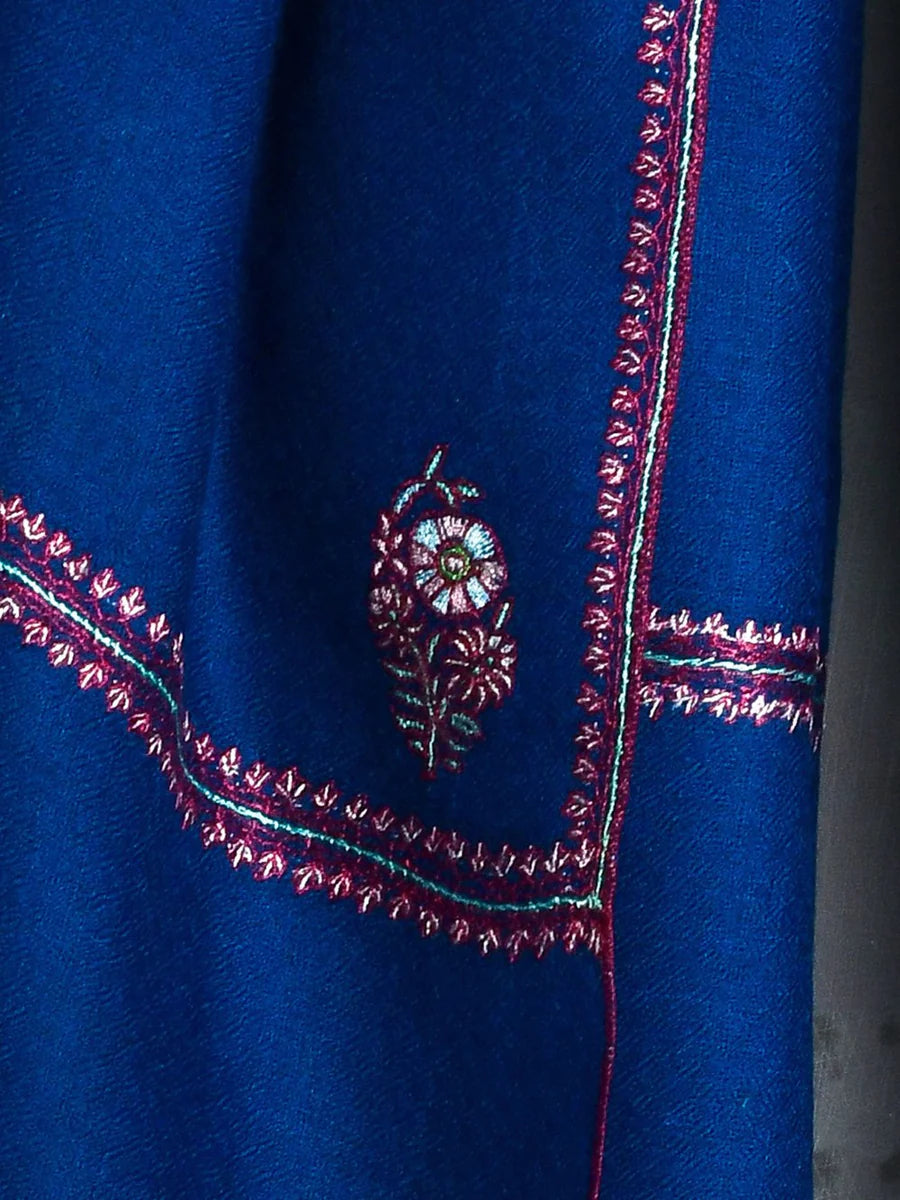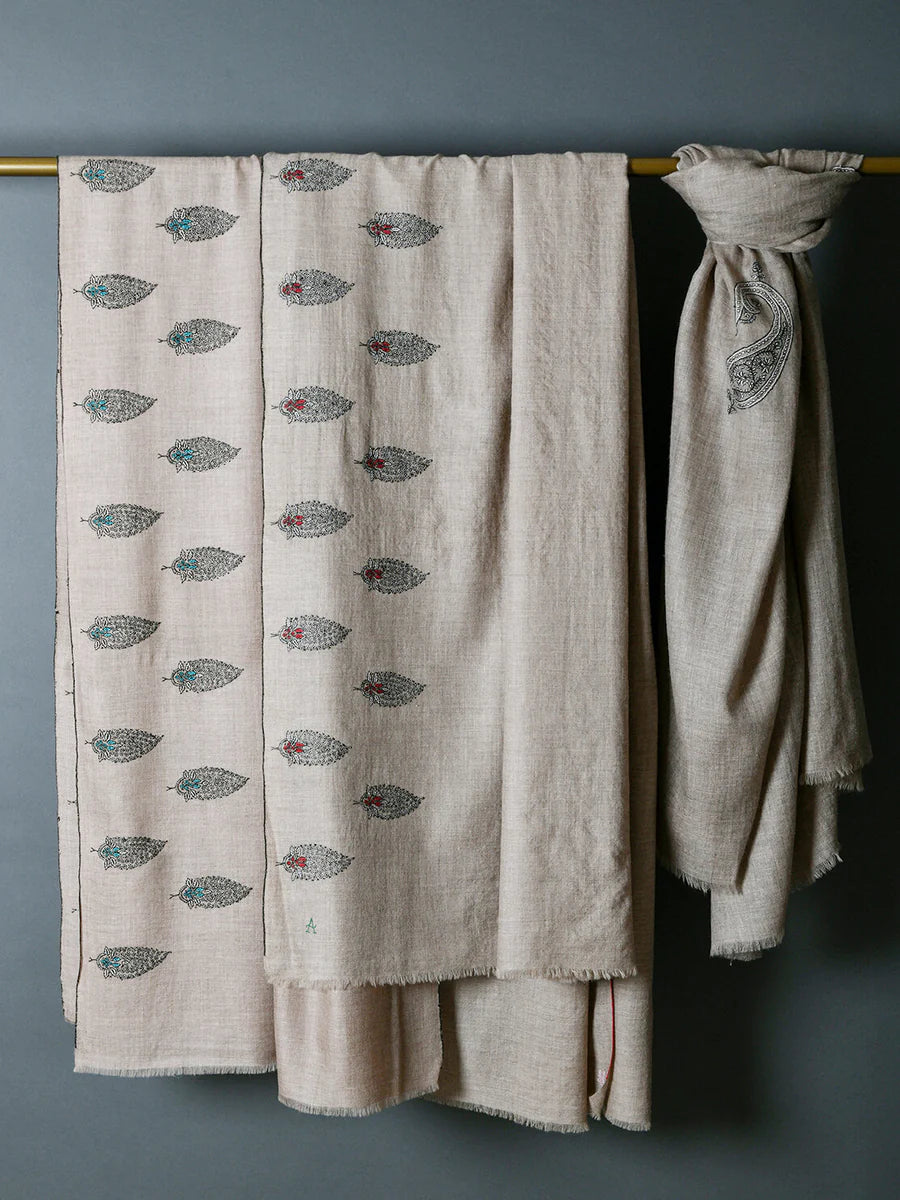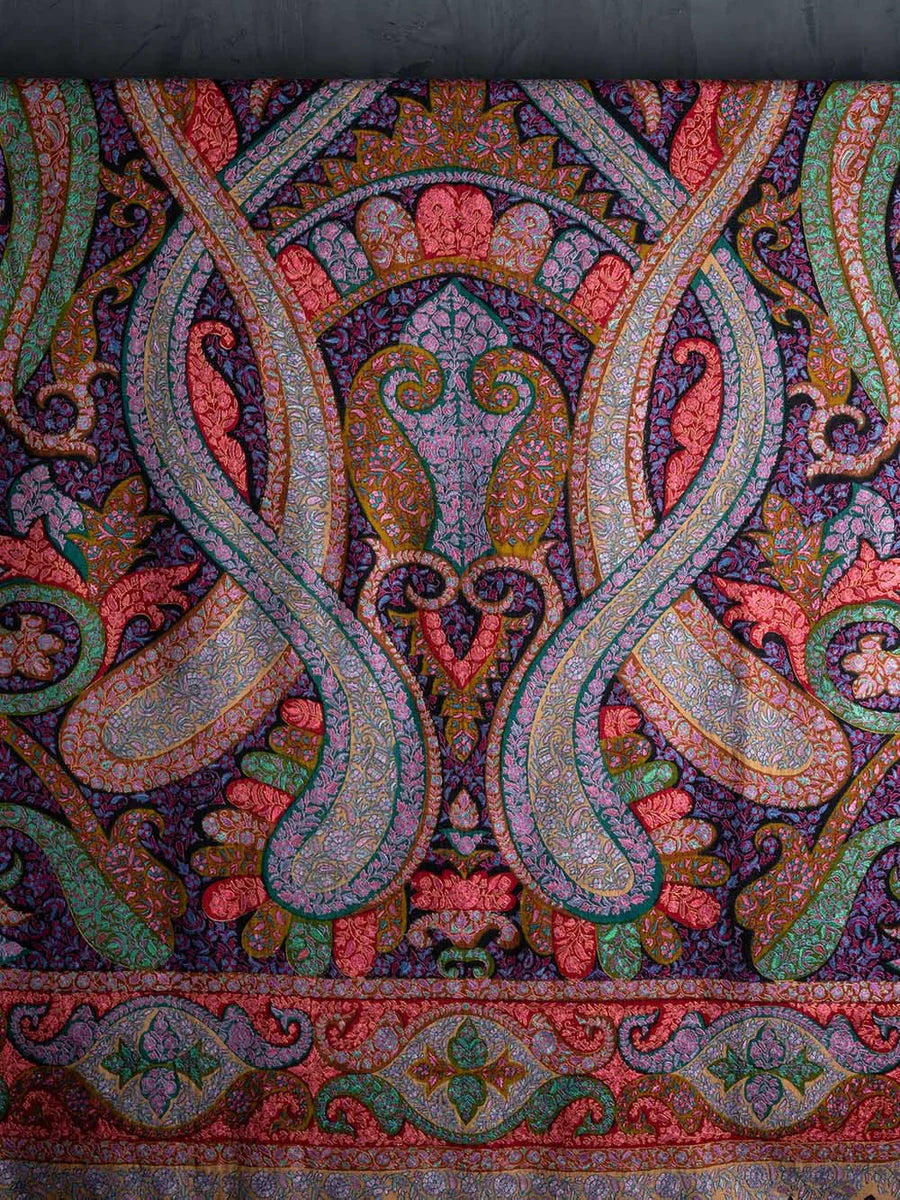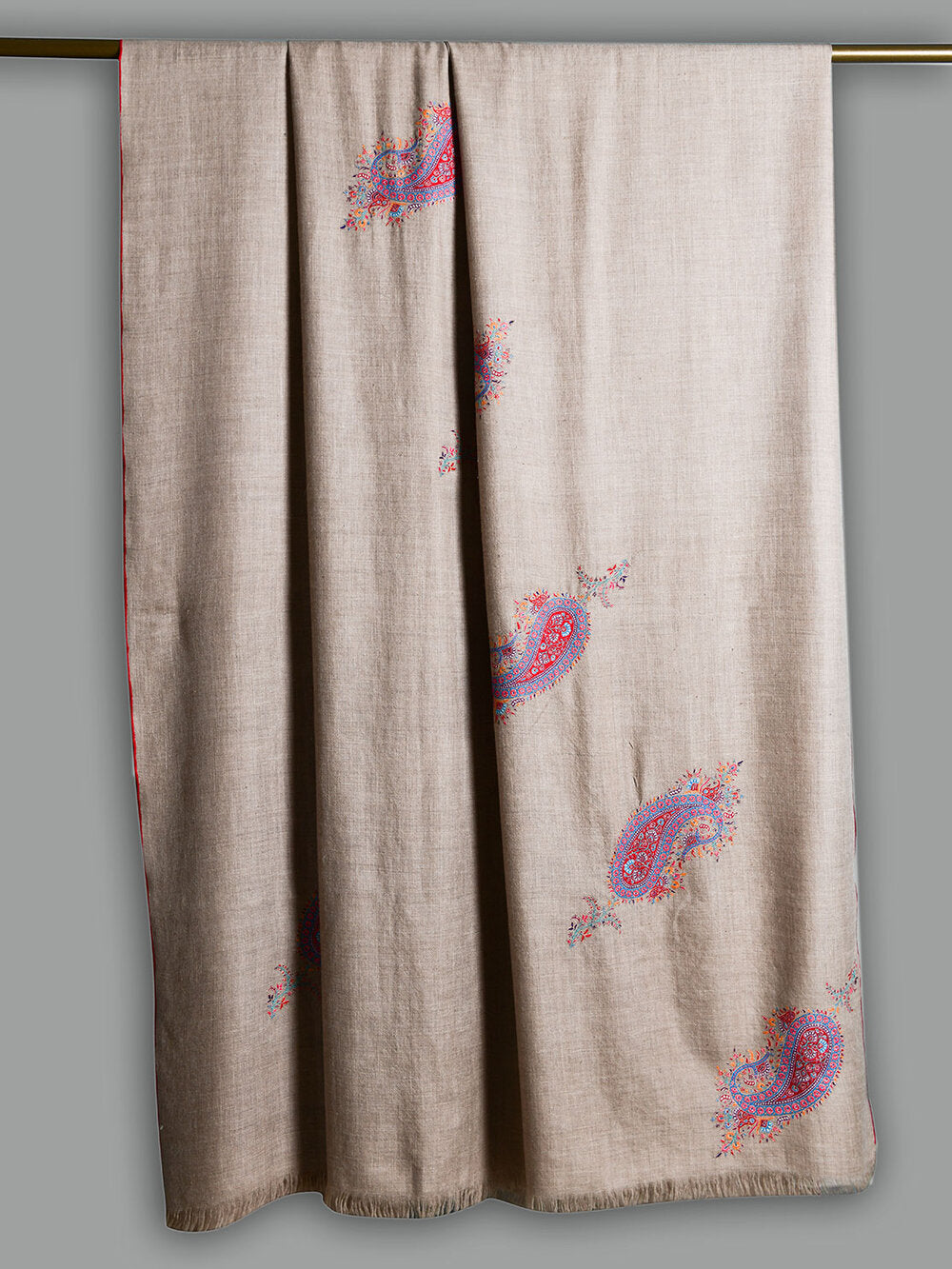Glossary of Embroidery Styles
As we introduce our long awaited, one of a kind, embroidery collection online, we attach a glossary of the meaning of words traditionally used to describe the various techniques. A better understanding leads to a deeper appreciation of the hours, days, weeks and years of craftsmanship, and the intricate art of weaving and hand embroidery. Each piece is unique and even the (seemingly) simplest of designs are a labour of love and detail.

Bale
Bale or Baledaar is the original name for the straight line of colorful embroidery on all four sides of a shawl (usually measuring about 2-3 cms). The Bale was usually a highlight on the edges. Traditionally, the four corners of the shawl would have a Boteh each on the inside of the Bale, placed at an angle of 45 degrees pointing to the center of shawl. At Andraab we embroider the Bale as a single colour in order to enhance its minimalistic feel, bringing a freshness to the design.

Boteh
Boteh is traditionally a small embroidered motif inspired by nature. Botehs have taken the form of paisleys, florals, cypress and the cedar tree. The paisley is a teardrop-shaped motif with a curved upper end is of Persian-Indian origin. Design scholars believe the cypress tree is a Zoroastrian symbol of life and eternity. The "bent" cedar is also a sign of strength and resistance tempered with modesty. The floral motif was originated in the Sassanid dynasty and later in the Safavid dynasty of Persia (1501–1736), and was a major textile pattern in Iran during the Qajar and Pahlavi dynasties.
The craft of shawl-weaving came to Kashmir seven centuries ago from eastern Persia and central Asia. Kashmir shawls were heavily influenced by the original designs and motifs. The Botehs find extensive use in the craft of the Kashmiri shawl, both in terms of the woven Kaani design as well as the embroidered versions. Andraab’s version of the Boteh modernizes the shapes and plays with designs and variations of all-over botehs, palla botehs and miniscule boteh versions to make each shawl unique.
The Boteh shawls can also have Bale, Kaaj or Kingar along the sides to add to the overall beauty.

Jamawar
The Jama; a modern interpretation of Jamevar/Jamavar, is exquisitely intricate embroidery which covers every square millimeter of a pashmina with different designs, traditional or contemporary.
Jamawars were favoured by royalty in the subcontinent and central Asia for use in their imperial clothes and drapes, canopies, and other markers of prestige and pomp. The Jamavars were traditionally woven with bobbins and the best of them would consist of silk warp and pashmina weft. The finest weaves among these had two faces as mirror images of each other, called Dorukhas, or double-sided shawls.
Over the last century and half, the finessing of the quality of fine embroidery led to these shawls being highly valued and coveted. The detailing and intricacy of the embroidery techniques and threads used increased their value and demand, making them more sought-after than the simpler woven designs. This leads us to the modern day interpretations of the Jamavar or the Jamas (as they are affectionately referred to). Each Jama can take a master embroiderer from 1 to 4 years to produce, depending on the design, intricacy, thread used and its particular gauge. Once completed these breathtaking pieces are worthy of a museum and are true works of art and craft.

Kaani
Kaani is a shawl woven with bobbins or twigs (which are calledkaaniin the local language) on a double twilled loom. This particular technique was born and nurtured in the Kashmiri town of Kanihama, and closely resembles the weaving technique of elaborate tapestries. The designs are first colour-coded and then woven over the pashmina warp with the help of bobbins, each bobbin representing a different color. The bobbins are then interwoven with each other and the warp to bring to life beautiful floral, traditional or contemporary designs. Each shawl can take from 2 months to 2 years on the loom to finish. Andraab is proud and honoured to employ a few of the remaining handful of weavers who are masters of this technique.

Paisley
Paisley refers to the almond like, curved teardrop shapes inspired by ancient Persian designs. These embroideries on Kashmiri shawls found their way to England and Scotland in the 19th century, where they were highly prized and then widely imitated. Its english name (paisley) comes from the Scottish town of Paisley, which became the largest producer of these patterns, setting themselves apart by machine weaving them into multiple colours.
Andraab only uses the traditional methods of the ancient Persians, bringing the finesse and the elegance of original technique to life.

